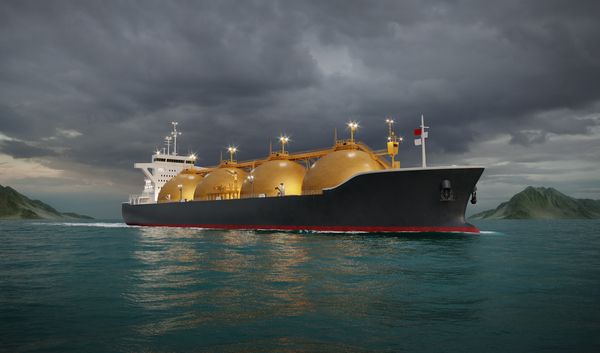Cheniere Energy, Inc. (LNG 0.71%) is a leading player in the U.S. liquefied natural gas (LNG) market, which is set to become a major player in the world for this important fuel. Cheniere Energy, however, is a complex business that controls two other entities, including Cheniere Energy Partners, L.P. (CQP 0.39%), which owns and operates the Sabine Pass LNG export facility. This facility is already exporting LNG and the partnership is paying sizable distributions to unitholders. That's where the big difference is here: How do you want to invest in U.S. LNG, for income or for growth?
It's a family
Cheniere Energy is the parent of Cheniere Energy Partners, L.P. and Cheniere Energy Partners LP Holdings, LLC (NYSEMKT: CQH). Cheniere Energy Partners LP Holdings, LLC's only material asset is an investment in Cheniere Energy Partners, L.P. It's a bit of a complex relationship, but the two main businesses are really Cheniere Energy, the parent, and Cheniere Energy Partners, L.P., the owner and operator of Sabine Pass.

Image source: Getty Images.
When you step back from this family portrait, there are two big differences between the parent and its child. The first is income: Cheniere Energy doesn't pay a dividend while Cheniere Energy Partners' material distribution provides unitholders with a 6.8% distribution yield. The second is growth: Cheniere Energy Partners' Sabine Pass LNG facility is up and running (though not completely built out) while Cheniere Energy is still in the process of constructing another LNG export facility in Corpus Christi, Texas.
A deeper look
Essentially, Cheniere Energy is about the growth of the U.S. LNG export business right now. It is benefiting from the income it receives from Cheniere Energy Partners, but that's all going toward Corpus Christi's construction. The first two LNG export facilities there, called trains, won't be completed until 2019 at the earliest. So there's another year or two worth of construction expenses before Corpus Christi will start to produce material income. There's room for a third train there as well. So there could be even more construction costs after LNG starts flowing from Corpus Christi.

Corpus Christi construction won't be complete for more than a year. Image source: Cheniere Energy, Inc.
But let's put some numbers on the this backstory to drive the point home -- Cheniere Energy has lost money in each of the last 10 years as it works to build out its LNG export assets. It's unlikely that it will get consistently into the black until late 2019, if not later. The story here is all about the potential growth of the business. By comparison, Cheniere Energy Partners posted positive earnings in the fourth quarter of 2016 after a string of construction-led red ink and hasn't lost money since, now that the majority of its Sabine Pass facility is built and running.

Sabine Pass is up and running now, with more upside from addition LNG trains. Image source: Cheniere Energy, Inc.
Cheniere Energy Partners paid distributions all through the construction of Sabine Pass, but now it can actually support those payments with the income it generates from exported LNG. The partnership has increased the distribution two times at this point, with more hikes likely as the business ramps up to full speed and the two additional trains in the construction pipeline get completed. Train five is expected to be done in 2019.
What kind of investor are you?
Cheniere Energy's corporate structure is too complex for my taste, so I wouldn't buy it or any of its offspring. However, if you are looking to invest directly in the U.S. export of LNG, Cheniere Energy and Cheniere Energy Partners are good ways to get that exposure. But they offer different paths right now. Cheniere Energy is a growth story, as it builds out a second LNG export facility in Corpus Christi. Cheniere Energy Partners is an income play, as it finally gets to reap the benefits of its Sabine Pass facility -- with a little more growth on tap as it expands the asset over time.







